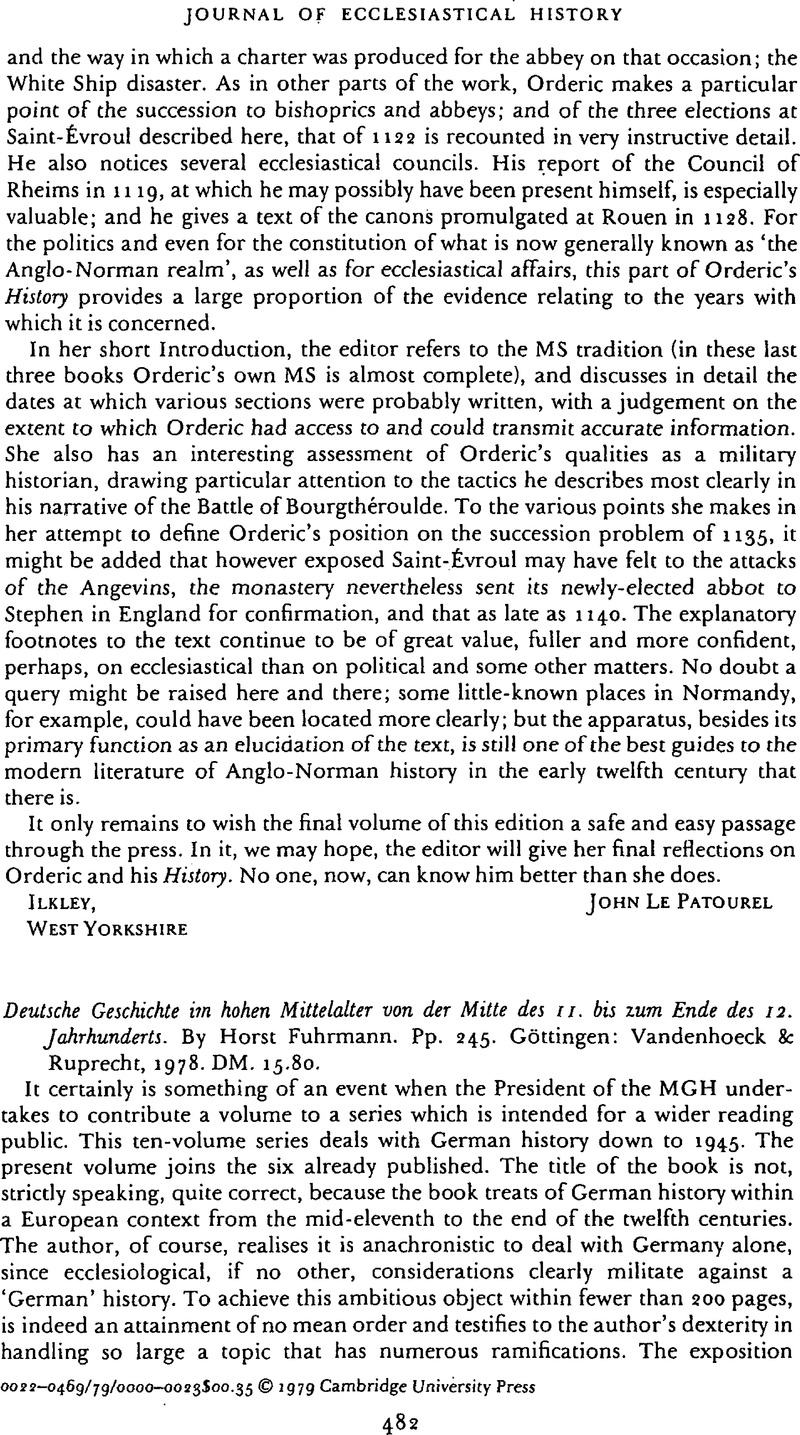No CrossRef data available.
Article contents
Deutsche Geschichte im hohen Mittelalter von der Mitte des 11. bis zum Ende des 12. Jahrhunderts. By Horst Fuhrmann. Pp. 245. Göttingen: Vandenhoeck & Ruprecht, 1978. DM. 15.80.
Published online by Cambridge University Press: 25 March 2011
Abstract

- Type
- Reviews
- Information
- Copyright
- Copyright © Cambridge University Press 1979
References
3 See Elze, R. (ed.), Ordines coronationis imperialis (Fontes Iuris Germanici Anliqui IX) (Hanover 1960), Ordo xiv. 19, p. £40Google Scholar , lines 28-30: ‘Ibique (scil. in secretario) fatiat eum clericum et concedit ei tunicam et dalmaticam et pluviale et mitram, caligas et sandalia quibus utatur in corona sua, sic indutus stat ante dominum papam.’ I am not aware of any royal ordo which contains a similar provision.
4 The author bases himself on the role of the priests as administrators of the sacraments, but surely this was very old sacramental doctrine that had been common property since the patristic period. The Prima Clementis clearly had pointed the way which eventually led to the literary and popular conclusion of Ps. Denys.
5 It may be the circumscribed nature of the volume explains the recourse to what in reality is merely a terminological shorthand device similar to that which calls die government the ‘State’ or which takes the General Staff (or even part of it) to mean the Army. This ambiguous terminology eventually based on mental fuzziness, caused untold confusion.
6 The recent paper by Stelzer, W., ‘Zum Scholarenprivileg Friedrich Barbarossas’ in Deutsches Archiv xxxiv (1978), 123ff.Google Scholar merely knocks down self-erected figures of straw. The story about the horse of Bulgarus (164) may have been echoed by Azo, see his Summa Codicis (ed. Basileae, 1563)Google Scholar ad C.III. De iurisd. omnium iudicum, no. 17, col. 186: ‘… ob hoc amiserim equum, sed non fuit aequum.’ Cf. on this also Savigny, F. C., Gesch. d. röm. Rechti im Mittelalter, 2nd ed. (Heidelberg 1850), iv. 181–3Google Scholar.




